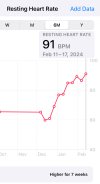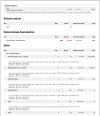The genomic regulation of the β-AR has been associated with cardiac remodeling and heart failure [311, 312]. In this regard, it has been shown that exercise training in rats reverses β-AR dysfunction by reducing the levels of G protein-coupled receptor kinase-2 (GRK2), an enzyme implicated in β1-AR and β2-AR dysregulation in CHF [313–315]. Moreover, exercise seems to restore the adrenal GRK2/α2-AR/catecholamine production axis [313]. Also, exercise augments vascular β-AR responsiveness and diminishes the activity of GRK2 [316]. Interestingly, β1-AR expression in the heart would be directly influenced by anabolic-androgenic steroids (AAS, synthetic derivatives of T) [317]. The use of AAS in combination with resistance training frequently improves the physical performance and helps athletes gain muscle mass and strength [318, 319]. However, numerous AAS abuse side effects include endocrine (hypogonadism) and detrimental cardiovascular issues [320–322]. For instance, vigorous training, anabolic steroid abuse, and the sympathetic nervous system’s stimulation in mice increased cardiac levels of IL-1β and TNF-α and plasmatic levels of total cholesterol [320]. Furthermore, it has been demonstrated that the use of AAS induced cardiac hypertrophy and increased myocardial susceptibility to ischemia injury [322, 323]. In this context, the administration of nandrolone (AAS) to male rats under an exercise training protocol increased the expression of β1- and β2-AR in the cardiac right atrium, provoked the prolongation of the QTc interval, and increased the BP [324]. In addition, the exposure of nandrolone augmented hypertension in SHR rats and β1-AR protein expression in the left ventricle [317]. These data suggest that myocardial injury may be predisposed by high-performance training, steroid abuse, and the sympathetic nervous system’s stimulation. Moreover, these insights may explain cardiac ailments and deaths in athletes under an AAS regimen




